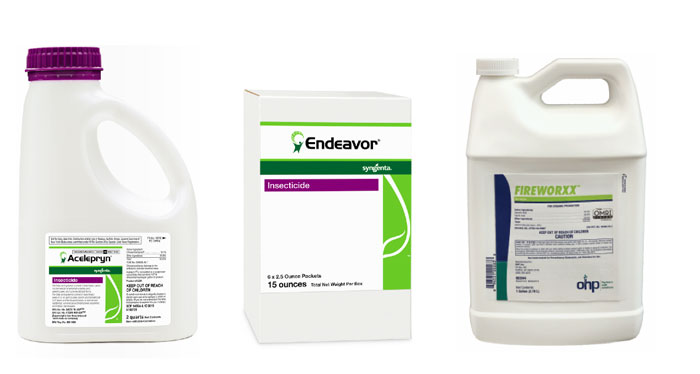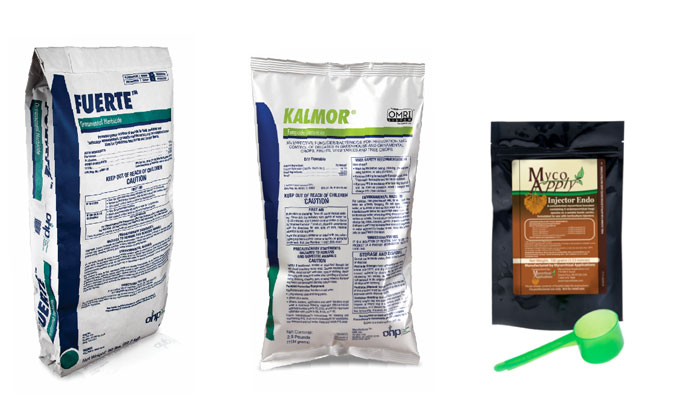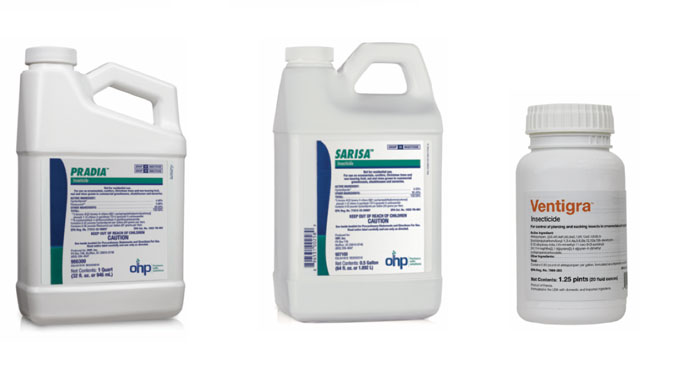3/1/2020
ICYMI*
JC Chong

The year 2019 was a busy one for pesticide introduction. In addition to the 10 biofungicides and insecticides that added industrial hemp to their labels, there are other products that have been registered for use in our industry.
Acelepryn insecticide by Syngenta is now registered for greenhouse and nursery uses. Acelepryn contains chlorantraniliprole (IRAC 28), and was first introduced to the turf and landscape market in 2008 by DuPont. The expanded label includes foliar sprays against leaf-feeding caterpillars, soil application (via injection, drench or spray) and container drench application against white grubs, aphids and lace bugs, and trunk spray application against clearwing borers. REI is four hours.
Alluma—an insecticide, insect repellent, miticide and pesticide synergist—was introduced by Sym-Agro. Alluma contains garlic oil, thus, it’s an essential oil that’s not classified by IRAC, nor requires EPA registration. It can be used on various fruits, nuts, vegetables, herbs, grains, grasses, mushrooms and many other crops in both indoor and outdoor production. Alluma has both contact and translaminar activity against a wide range of insects and mites.
Azera Pro insecticide was introduced by MGK. Azera Pro is a combination of pyrethrins (IRAC 3A) and azadirachtin (unknown mode of action), with activity against a broad spectrum of pests. Azera Pro is OMRI-certified. It can be applied as a foliar spray or a medium drench on ornamentals, vegetables, fruits, nuts, herbs, spices and other crops. REI is 12 hours.
Endeavor (pymetrozine; IRAC 9B) expanded its label to include uses as foliar spray on vegetable transplants (cucurbit, eggplant, pepper, tomato, cole crops and leafy vegetables) and drench application on ornamentals. Endeavor is labeled against aphids and whiteflies. REI is 12 hours.
FireWorxx herbicide was introduced by OHP. This is a non-selective, burn-down herbicide containing 44% caprylic acid and 36% capric acid. Targets include broadleaf weeds, grasses, algae and mosses in nurseries, landscapes and greenhouses, and around buildings and structures, sidewalks and in gravel. FireWorxx is OMRI-listed and REI is 12 hours.
Fuerte herbicide was introduced by OHP. Fuerte is a dustless granular pre-emergent herbicide, containing 0.125% flumioxazin (WSSA 14) and 0.75% prodiamine (WSSA 3). Fuerte is registered for pre-emergent control of grassy and broadleaf weeds in field and container nurseries, landscapes, Christmas tree farms and conifer farms. REI is 12 hours.
 Kalmor fungicide/bactericide was introduced by OHP. Kalmor contains copper hydroxide (FRAC M1). This product is labeled for management of a wide range of fungal and bacterial diseases on vegetables, herbs, ornamentals, conifers, and fruit and nut trees grown in greenhouses, shadehouses and nurseries, as well as algae control on non-residential turf (golf courses, sod farms, cemeteries and industrial sites). Kalmor is OMRI-listed and its REI is 24 or 48 hours, depending on PPE requirements.
Kalmor fungicide/bactericide was introduced by OHP. Kalmor contains copper hydroxide (FRAC M1). This product is labeled for management of a wide range of fungal and bacterial diseases on vegetables, herbs, ornamentals, conifers, and fruit and nut trees grown in greenhouses, shadehouses and nurseries, as well as algae control on non-residential turf (golf courses, sod farms, cemeteries and industrial sites). Kalmor is OMRI-listed and its REI is 24 or 48 hours, depending on PPE requirements.
MycoApply Injector Endo was introduced by Mycorrhizal Applications. This new formulation is highly concentrated with a humic acid carrier and can be applied through injec-tion dosing system, spray, sprinkler system, tray dip or drip irri-gation. This biofun-gicide contains four species of Glomus endomycorrhizal fungi—G. intraradices, G. mosseae, G. aggregatum and G. etunicatum.
Obtego biofungicide was introduced by SePRO and contains Trichoderma asperellum (strain ICC 012) and Trichoderma gamsii (strain ICC 080). It’s used for preventive treatment of pathogens that attack roots and collars, including Fusarium, Phytophthora, Pythium, Rhizoctonia and Thielaviopsis. Trichoderma works by colonizing root zone, competing with pathogens for nutrients and space to grow, attacking and growing on pathogenic fungi, and producing fungicidal enzymes. It’s labeled for ornamentals, fruits, herbs, vegetables and turf grown in fields, greenhouses, nurseries, landscapes, golf courses, sod farms, and other indoor and outdoor sites. REI is four hours.
 Pradia insecticide was introduced by OHP. Pradia contains two active ingredients—cyclaniliprole (IRAC 28) and flonicamid (IRAC 29). Pradia has the same use site and target pests like Sarisa (see below), but with greater efficacy against thrips and mealybugs than Sarisa. REI is 12 hours.
Pradia insecticide was introduced by OHP. Pradia contains two active ingredients—cyclaniliprole (IRAC 28) and flonicamid (IRAC 29). Pradia has the same use site and target pests like Sarisa (see below), but with greater efficacy against thrips and mealybugs than Sarisa. REI is 12 hours.
Sarisa insecticide was introduced by OHP. Sarisa contains a brand new active ingredient: cyclaniliprole (IRAC 28). Sarisa is registered for use on ornamental plants, conifers and non-bearing fruit and nut trees grown in greenhouses, shadehouses and nurseries. Target pests include leaf-feeding caterpillars, beetles and thrips (suppression), as well as sucking insects (adelgids, aphids, lace bugs, mealybugs [suppression], psyllids, soft scales, stink bugs and whiteflies) and others. REI is four hours.
Ventigra insecticide was introduced by BASF. The active ingredient of Ventigra is afidopyropen, which is a new active ingredient in IRAC 9D, and works by disrupting the normal balance, movement and feeding of sucking insects. Target pests are aphids, whiteflies, mealybugs and scale insects. Ventigra is registered for use on ornamentals, vegetable transplants, and juvenile fruit and nut trees grown in greenhouses, shadehouses, nurseries, landscapes and interiorscapes. REI is 12 hours.
Zio fungicide was introduced by SePRO. The active ingredient in Zio is the Pseudomonas chlororaphis strain AFS009. It can be used for management of several diseases in turfgrass, ornamental plants (both indoor and outdoor), and vegetable and fruit transplants that are caused by pathogens such as Botrytis, Colletotrichum, Fusarium, Phytophthora, Pythium, Rhizoctonia and Sclerotinia. The bacterium controls the target diseases by coating the fungal pathogens and halting fungal respiration, breaking down fungal structure, and colonizing the soil and plants, and competing with the pathogens for vital resources. REI is four hours. GT
*A text and social media acronym for In Case You Missed It. LOL!
Juang-Horng “JC” Chong is a professor and extension specialist at Clemson University, and editor of the PestTalks e-newsletter.